Do You Have Any Pet Scapegoats?

(Introduction: September 28 is World Day of Migrants and Refugees. The Church has celebrated this day since 1914. That’s 111 years! I wrote this reflection not with that day in mind. But after I wrote it, I realized the words below are indirectly related to this day, a day on which the Church calls us to “empthy and action” on behalf of migrants and refugees all over the world.)
I’ve been reflecting on scapegoats lately. As you know, a scapegoat is a person or group who is blamed for the wrong doings, mistakes, faults, or sins of others. The word goes back to the Bible (Leviticus 16) when the Jewish leader would symbolically lay the sins of the people onto a goat who would then be banished into the desert to die. The people were in effect saying, “Good riddance, goat! Good riddance all our sins and wrong doings! Now we’re pure again!” (Poor goats!)

History is replete with scapegoats. Witches (usually women) were blamed for the Black Death in the Middle Ages as well as the evils in 17th century Salem, Massachesetts. (Within one year, 200 people in Salem were accused of witchcraft, 20 were executed.) Perhaps the most blatant example of scapegating in recent memory occured in Nazi Germany when Hitler blamed Germany’s economic problems mainly on the Jews. In essence he promised, “Get rid of the Jews, and Germany will thrive again!” Before it was over, 6 million human beings (mostly Jews) were systematically put to death in horrific ways. Throughout history, a common scapegoat has aways been immigrants who are accused of “polluting” the particular nation’s “pristine goodness.” Sometimes individuals have become scapegoats–such as Socrates, Marie Antoinette, and (some argue) even Jesus. More about that later.
Psychologists tell us that scapegoating has its roots in a phenomonon known as displacement. Psychologist Neel Burton, in Psychology Today writes, that displacement occurs when “uncomfortable feelings such as anger, frustration, envy, guilt, shame, insecurity are redirected onto another, often a more vulnerable person or group.” When this happens, those uncomfortable feelings are temporarily replaced “by a crude but consoling sense of affirmation and self-righteous indignation.” Just look at many of our mass shooters or assassins. If you read their “manifestos” you will often see how their scapegoating led them to the awful killing of people they considered “the source of our evil.”
How do we deal with this “deep-seeded impulse to scapegoat”? Here are a few ways:
+ by acknowedging scapegating’s existence in our contemporary world–and even acknowledging the tendency within ourselves.
+ by humbly acknowledging our own sinfulness. Let’s face it, most of you who read this blog are basically good people. But even good people can do bad things, make mistakes, be judgmental, be swayed by irrational thinking, or be selfish at times. How do we “atone” for these failings within ourselves? By making amends or asking for forgiveness–or by buying another goat?

+ by dealing in a healthy way with the inevitable tensions that come with being a human being and with trying to live in harmony with other human beings–some of whom are very different from ourselves. It takes only a few minutes to find a scapegoat for society’s problems and our personal problems. It takes a lifetime of hard work to strive to live and work in harmony with other flawed human beings–and with our own flawed self.
+ by learning to deal with our “uncomfortable feelings.” What do we do with our feelings of insecurity, shame, anger, sexual tension, frustration, fear, envy, guilt? Do we bring these to our prayer? Do we find some trusted others–counselors, spiritual directors, confessors, good friends–with whom we can discuss and deal with these feelings?
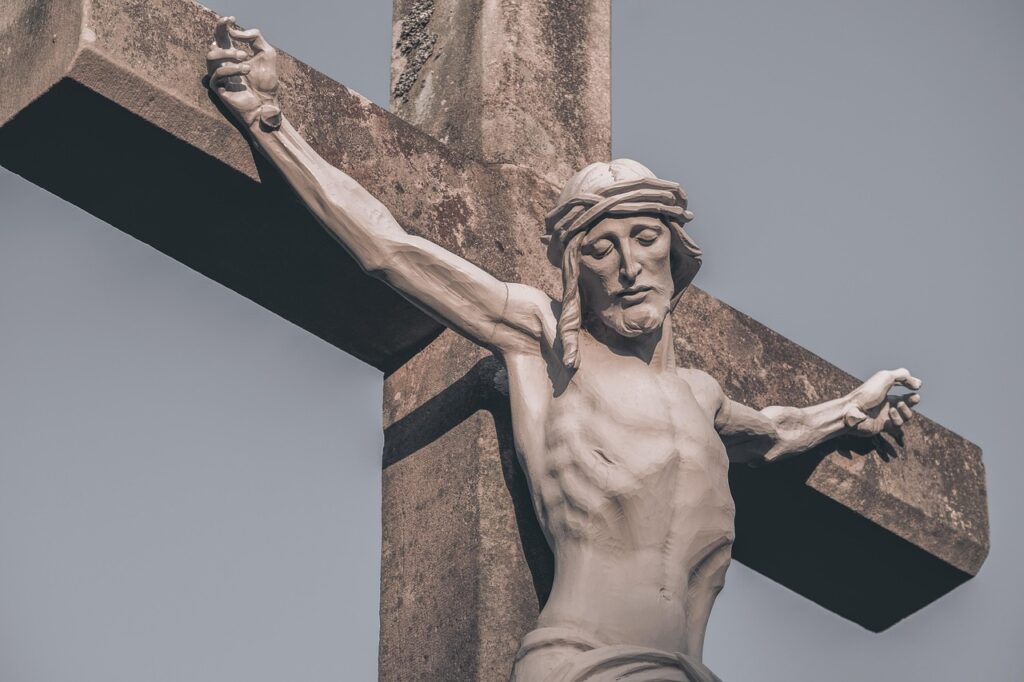
Fr. Ronald Rolheiser has written several columns on scapegoating. He says, “Christianity is the only religion which worships the scapegoat, the one who is hated, excluded, spat upon, blamed for everything, ridiculed, shamed, and made expendable.” But notice how Jesus responds to the terrible puishments being inflicted upon him. He doesn’t lash out against the perpetrators. He absorbs the evil and transforms it into new life–ultimately by forgiving the perpetrators. His mother Mary also “stands” by the cross and watches her son being put to death. Throughout the Gospel, Mary is shown “pondering” the events of her life. Says Rolheiser, “To ponder in the Biblical sense means to hold, carry, and transform tension so as not to give back in kind.” We see this response not only in Jesus and Mary, but others such as Mahatma Gandhi, Martin Luther King, Dorothy Day, Fr. Daniel Berrigan, Sr. Dorothy Stang, and many others.
My prayer for all of us is this:
Loving Jesus, help us to follow in your footsteps as we deal with the inevitable tensions of daily living. Let us be men and women of humility, not arrogance or pride. Help us to be mindful of our own failings and sinfulness, rather than projecting them onto others. May we find healthy ways to deal with the uncomfortable feelings that sometimes assail us–such as anger, frustration, envy, lust, guilt, shame, fear. Give us the love and courage it takes to do the hard work of working together to make our world a better place. And finally, we ask for your mother’s gift of pondering… that we may reflect on the events and happenings in our daily life, so that we may find your presence and life-giving actions within them. Amen.
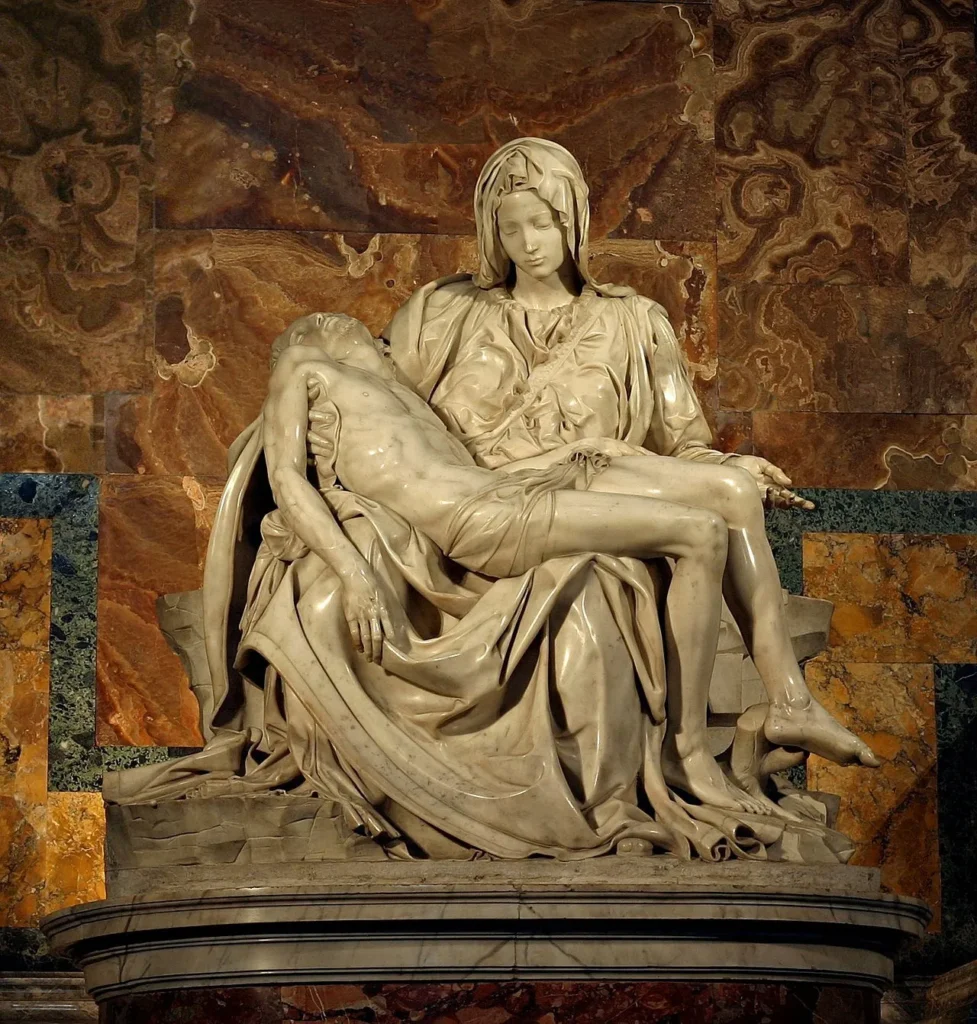
For reflection:
Did anything stand out for you in this reflection?
Have you ever witnessed a person or a group being treated as a scapegoat?
Have you ever felt you were being treated as a scapegoat?
How do you deal with uncomfortable feelings?
************************************************************
We Sisters of Notre Dame will host our annual chicken barebcue and boutique on Setember 28 on the campus of NDCL in Chardon. Check our website (sndusa.org) for details. Come and join us and enjoy a delicious dinner and shop at our boutique. I will be at the Book Nook in the boutique (in the school cafeteria) from noon until 3:00. Sister Kathleen Glavich and I will be selling our books–some at a discount. Plus I’ll have a few of my “gently used” books I’ll be selling at drastically reduced prices. And both Sr. Kathleen and I will even be giving a few of our books away FREE.

****************************************************************
Here is a very simple song that asks for forgiveness. It’s called “Forgive Me Lord,” and it’s produced by Surgenor Music.,
(I am recommending only the video “Forgive Me, Lord.” I am not necessarily recommending the other videos that appear after this one. Discretion is advised.)
I invite you to leave a comment below:
Little Kernels of Spiritual Nourishment

As you know, I read alot. Besides reading scripture everyday, I also pray with small periodicals that nourish my prayer–such as Living Faith, Living with Christ, and Give Us This Day. In addition, I always have several books by my reading/prayer chair. Often I come across little kernels of nourishment, a sentence or two, that comfort, challenge, puzzle, or inspire me. I will share fifteen of these little recent kernels with you today.
1. “O Lord…incline your ear to me” (Ps. 71:2) When I prayed these words I thought: Sometimes my prayer begins with a loud “PSST!” directed toward God!
2. “As Christians, we are NOT free to not care about others.” Rev. Miranda Hassett, St. Dunstan’s Episcopal Church, online somewhere.
3. I do not think we are ever without fear…. It is being able to endure the fear and still know that God is with us in our fears…. Perhaps that’s really what faith is–to be able to believe though we are afraid.” Theresa Kane, Sister of Mercy, from Give Us This Day, August 22, 2025, p. 232.

4. “Because of Ruth’s kindness, she changed from a foreigner to an ancestor of David, Israel’s first dynastic King.” Patricia Livingston, Living Faith, August 23, 2025. I thought: with my family history, I am VERY close to being a foreigner in this country. Only my parents stand between me and my four “foreigner grandparents” who immigrated from Bohemia. Maybe that’s one reason I care so much about immigration.
5. “In God’s perspective, if you have more grain than you need, the issue is not how to store it, but how to share it.” Fr. George Smiga, from Living with Christ, August 2025, p. 16. I thought, “It’s time to clean out your closest again, Melannie, and donate some of ‘your’ good clothes to someone who needs them.”
6. I am a Christian,” I concluded, “because the story of Jesus is still the story I’m willing to risk being wrong about.” Rachel Held Evans, Inspired, p. 164.
7. “There is no way to God apart from real life in the real world.” Barbara Brown Taylor.

8. “To paraphrase the moral theologian James F. Keenan, SJ, who said this about compassion, being a good friend is ‘entering into the chaos of another person’s life.’ And even if it’s just one person, it will make all the difference. For both of you.” James Martin, SJ, Give Us This Day.
9. “The truth is that I’m a mystery, even to myself. It’s like trying to solve an equation with too many unknowns. And if I can’t solve my own equation, who am I to think I can solve someone else’s? When I get judgy, I’m trying to train myself to stop and think of one word: “Unknowns.” Then I look for something in the person to appreciate. That’s ground-level grace, and it’s a better way.” Susan Pitchford, Give Us This Day, June 2025.
10. “The roadmap Mary provides us at the wedding feast of Cana is simple and profound: “Do whatever he tells you” (John 2:5). This is the roadmap that will lead us to heaven.” Bishop Frank J. Caggiano, Living with Christ, August, 2025, p. 19.
11. “I also like the concept expressed by the Bengali poet, Tagore. He says: ‘Faith is the bird that feels the light and sings while the dawn is still dark.'” Fr. James McKarns, Living Faith, August 10, 2025.
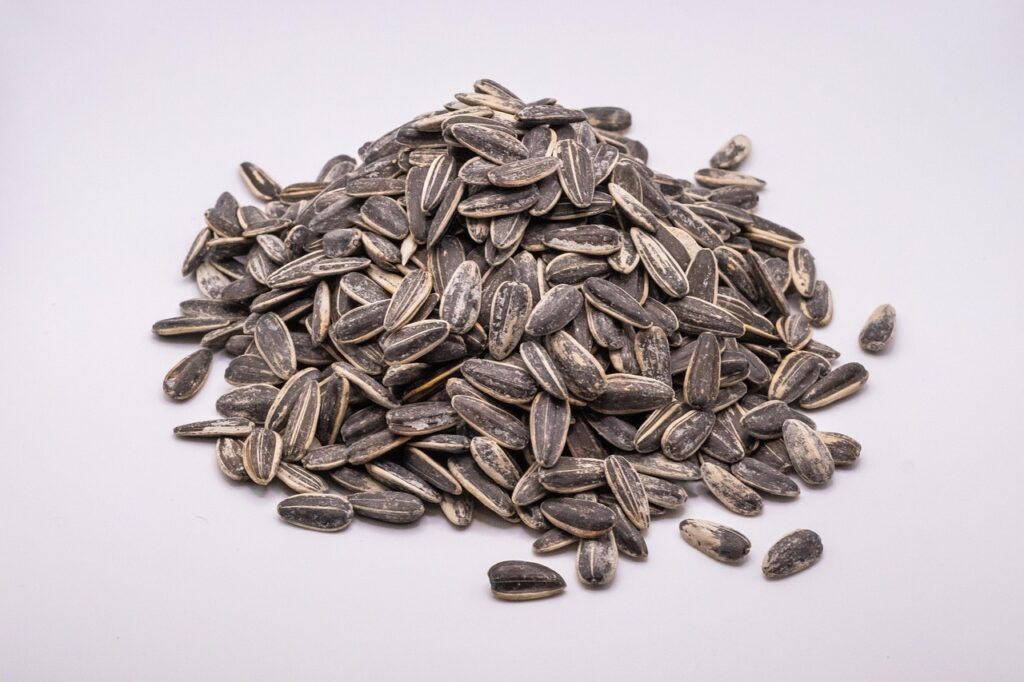
12. “The Lord will help them on their bed of pain; in their sickness, you tend even to the bedding” (Ps. 41:4). The image of God fluffing my pillows when I am sick in bed is very comforting for me.
13. “The woman at the well provided the ‘come and see”; Jesus did the heavy lifting and the loving.” Melanie Rigney, Living with Christ, August 2025, p. 22.
14. On grieving: One reason ancient people rent their clothes and covered their heads with ashes: “They knew that keeping it together is overrated.” Jan Richardson, The Cure for Sorrow: A Book of Blessings for Times of Grief.
15. And sometimes you find the perfect little one-sentence prayer that expresses exactly what you want to ask of God: “May God make us firm in faith, constant in hope, steadfast in love, through the power of Christ living in us. Amen.” Give Us This Day, August 2025, p. 301.
For reflection:
Are there any kernels here that caught your attention today? Feel free to share which one(s) with us below. You don’t have to say why it caught your attention if you don’t want to.
From your own reading or listening lately, did you find another kernel that nourished you? If so, would you like to share it with us below?
Did any of today’s photos catch your eye–or heart?
**********************************************
PS: Our annual Chicken Barbecue & Boutique will be held on Sunday Sept. 28 from noon – 5:00 on our NDCL campus. Go to our website (sndusa.org) and click on the Chardon region. Then click on events to get all the details. Dinners ($18 each) can be ordered online or purchased on Sunday. Each dinner includes 1/2 chicken, coleslaw, potato chips, roll, and a slice of apple pie. I will be there at the Book Nook in the cafeteria with my books from noon until 3:00. Stop by and say hello!

We Sisters here have learned a new song recently. Most of us seem to like it. It’s called “We Tend the Ground” by Curtis Stephan. It’s inspired by Pope Francis’ encyclical Laudato Si which focuses on caring for our environment. Many times a song can be a kernel of spiritual nourishment too!
(Disclaimer: I am recommending only the video I have posted here. I have no control over the videos that appear after the video I chose. Some are fine, but others I am NOT recomending. Please use your discretion.)
I invite you to leave a comment below–on the 15 “kernels,” the photos, or the song…
Using Works of Art During Prayer: Eugene Burnand

For many years I have been drawn to using works of art during my prayer. When I made my annual retreat in the past, I would be sure to pack a couple of books of paintings and photography to take with me. Now I take my ipad and go online. I figure, during the year, I almost always pray with words–scripture (of course) and poetry and songs. So focusing on the visual arts during my retreat was a refreshing change for me.
Recently I came across a Swiss artist I had never heard of before although I was familiar with one of his best-known paintings, “Running to the Tomb on Easter Morning.” (More about that later.) The artist is Eugene Burnand (1850-1921), a man with incredible talent who is well-known in Switzerland and France, but little appreciated outside these areas. He was a realist painter of nature. “The Bull in the Alps” (featured above) is a fine example of his nature work. I love this painting! I am drawn by the bull’s colorful coat. I want to reach out and feel its texture. (But of course I don’t dare!) I marvel at his massive neck and chest, his strong leg muscles, his horns–all revealing the colossal power of this singular animal. And in the background, I glimpse the deep, deep valley below. This bull is up really high–and he’s standing right on the edge too! How daring he is! I wonder: is he bellowing? There’s breath coming from his muzzle. Is he calling to the mountains–or does he see a small herd of lady cows across the great divide? Is he lonely? Triumphant? Regal? Despite all his power, does he long for something beyond himself? For me, there’s so much beauty here–in the grassy pasture on which he stands (there are some bright colored flowers easily seen in the huge original painting). The deep valley with a river running through it, the towering mountains–some snow-capped–all compliment the beauty of this amazing bull! What must the bull’s Creator be like to have fashioned him.
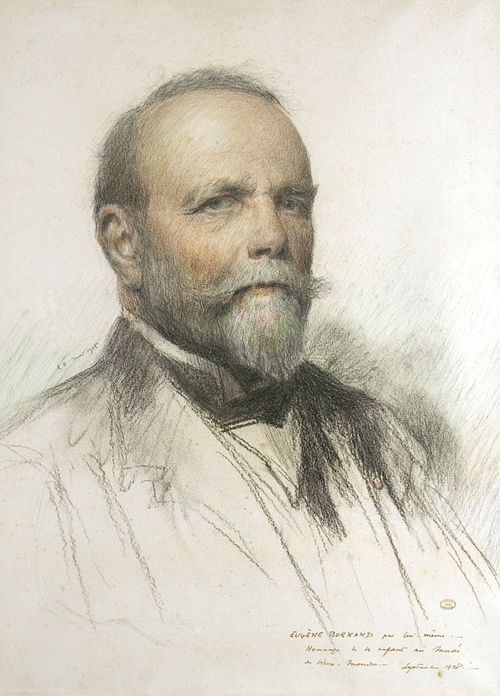

As Burnand grew older, he became increasingly interested in painting human beings. A deeply religious Protestant, he looked to the Bible for inspiration. He was dissatisfied with traditional illustrations of the Bible. He believed the people in the Bible should be depicted as real everyday people. In his own illustrations he often used his neighbors and ordinary people as his models. One of his major religious works was an illustration of 32 parables of Jesus consisting of 76 paintings, drawings, and sketches. That endeavor took him four years to complete. Burnand was also deeply affected by World War I. He was amazed at the wide range of people who had been drawn into the conflict. As a result, he did a series of 104 pastel portraits of participants in the war, focusing not on the leaders, but on “the lowly.”
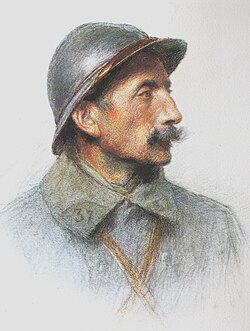
So now, let’s reflect on Burnand’s painting of St. Peter and St. John running to the tomb on Easter morning. Some people say this is “the greatest Easter painting ever,” and yet it doesn’t even show the Risen Jesus! We begin by putting the painting within a context. Some women have been to the tomb on Easter morning to anoint the body of Jesus. But when they get there, they find the stone rolled back and the tomb empty. What’s more, they see an angel who tells them Jesus is risen–and they should go tell the disciples. Terrified, the women run like heck to tell the disciples.
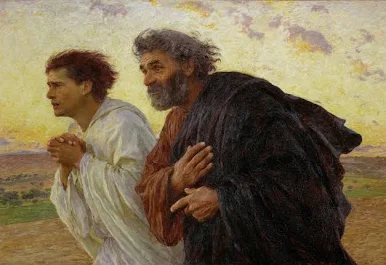
This painting shows St. John and St. Peter running to the tomb to see for themselves. We begin by simply gazing at the painting… slowly.. and for however long it takes. You can do this on your own, or these words might help you: Notice what you notice… the faces of each man… their hair, eyes, mouth, facial expression… notice their clothing, colors and textures… their hands… what do the clasped hands of John say to you? what about Peter’s hands? notice their posture, their leaning forward… how do we know these men are running?… Then raise a few questions for yourself: what do you detect in their facial expressions? fear? anxiousness? hope? disbelief? joy? What do you notice about the background… the sky?… These men have not seen the Risen Jesus. That will come later. They only have the story of the women. Are those women delirious and hysterical? The men want to see for themselves… I ask myself: what do these men and I have in common? Can I relate to them and their experience? Why do some people say this painting is such a great Easter painting? Does it capture all of us who have not seen the Risen Lord but want desperately to believe the story is true? Does this painting lead you to prayer… to the Risen Jesus?
I will leave you with a few more paintings by Burnand:

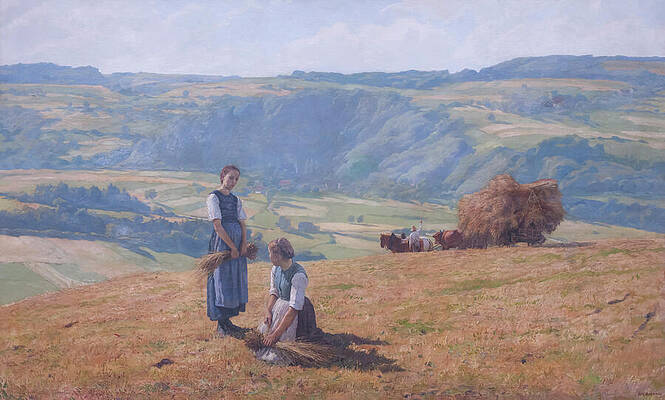
For reflection:
What did you notice in Burnand’s painting “Running to the Tomb on Easter Morning?” Would you like to share with us anything about this painting in the comments below?
Do any of you use the arts–visual, musical, literary, dance, or others–for your prayer? If so, would you like to share some of the things you have used?
Are you involved with the arts–as creators, teachers, lovers? Would you like to share some of your experiences with us?
Do any of Burnand’s other paintings speak to you here?
Our video is a short (8 min.) commentary on Burnand’s painting. Two individuals share their thoughts on the painting. The video also includes some close-ups of the painting and additional information you might find interesting. I did!
(Disclaimer: As I mentioned before, I have no control over the videos that appear after the one I’ve selected ends. Some are fine. But others I certainly would NOT recommend. As they say, discretion is advised.)
Please feel free to jot down a comment below. We all love hearing from you!
Do We Need a Little Humor?

For me, the answer to that question is, “Yes!” So today’s blog is devoted to humor. I hope some of these make you smile, laugh, or at least groan!
Let’s start with the kids:
My 5-year-old couldn’t remember the word for tomorrow, so she called it “nexterday.”
We gave our 4-year-old grandson a fishing pole for his birthday. “Wow!” he said, “A fishing machine!”
I told my 9-year-old granddaughter that when I was growing up, our house was the first house on the block to have a color TV. She asked, “What color was it?”
The little girl was sitting on the river bank fishing with her father. She wasn’t having any luck. She said impatiently, “I just can’t seem to get waited on!”
My 3-year-old asked if he had batteries inside of him. I told him, “No.” He asked, “Then how come I can talk?”
My 7-year-old asked if I could get him something so he could send a letter the old fashioned way. I asked, “You mean paper, an envelope, and a stamp?” No, he wanted an email address.

Let’s advance(?) to Parish Bulletin mistakes or “Where’s a good proofreader when you need one?“
Ushers will eat latecomers.
Ushers will swat latecomers.
Today’s sermon: What is hell? Come early and listen to our choir practice.
Diana and Don request your presents at their wedding.
The church will host an evening of fine dining, superb entertainment, and gracious hostility.
The peace making meeting scheduled for today has been canceled due to a conflict.

What if famous writers had used a Thesaurus?
Book Titles: The Grapes of Exasperation… Adieu to Limbs… The Ravenousness Competitors…
(translation: The Grapes of Wrath… Farewell to Arms… The Hunger Games)
Song titles:
“Come on, Baby, Enkindle My Inferno!”… “Like a Gangplank over Anxious H20.”… “We Were Spawned to Scamper.”
(translation: “Come on Baby, Light My fire… Like a Bridge over Troubled Water… We Were Born to Run.”)
And what were the REAL famous lines below:
“May the fortitude be with you… You possessed me at Salutation… Forsooth, my pet, I don’t give a doodley squat!”
(translation: “May the force be with you… You had me at Hello… Frankly, Scarlet, I don’t give a damn!”)
What do lexicographers like for breakfast in the morning? Synonym rolls!
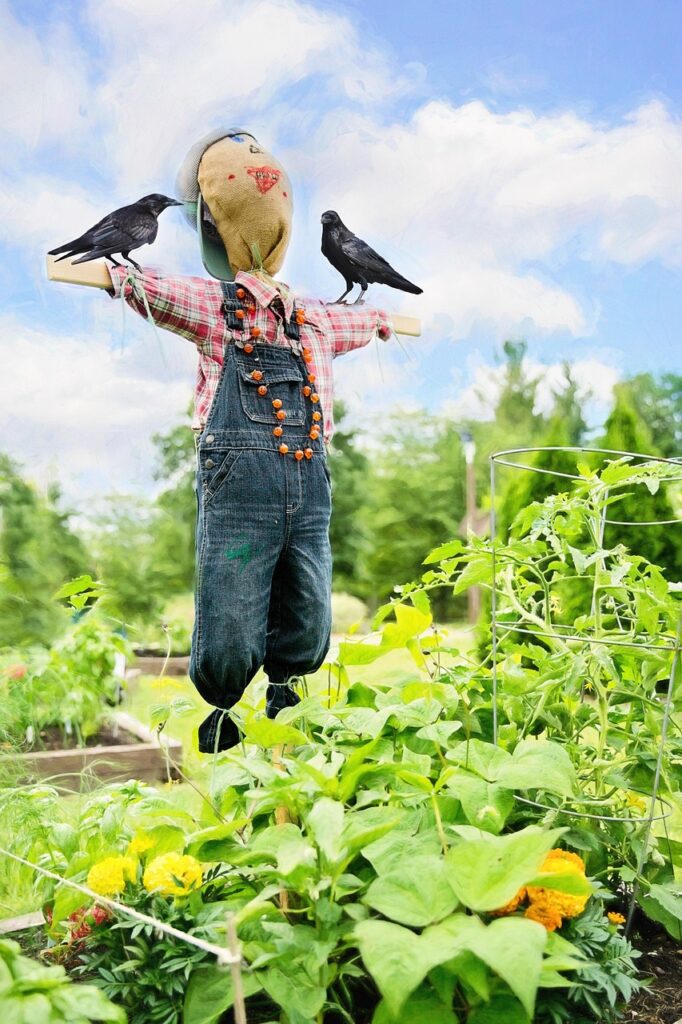
And miscellaneous:
Label on a deli case in New York City: Blubbery Cheese Cake $4.80 (Save the whales! Eschew the cheesecake!)
A defendent, acting as his own defense attorney, asked his his co-defendent, “When we robbed that gas station, was I there?”
Clerk: Do you swear to tell the whole truth and nothing by the truth?
Defendent: Sometimes.
On a resume:
Q: Reason for leaving your last job:
A: Responsibility makes me nervous.
Classic answers to the question, “What do you want to be when you grow up?”
Age 10: I wanna be a pilot.
Age 15: I wanna be a scientist.
Age 20: I wanna be an engineer.
Age 25: I wanna be a kid again!”
When attorneys get married, they don’t say “I do.” They say, “I accept the terms and conditions.”
A friend who knows I like poetry–especially haikus–sent me this un-famous haiku–(NOT infamous!). This little haiku might speak to where some of us are at this time in our life.
“A haiku about my life”
I am so tired
Where did all my money go
My back is hurting.
And finally: these two:
A guy complained about paying $3.50 for a gallon of gas while waiting in line to pay $5.00 for a cup of coffee.
The #1 Rule for parallel parking: Find another spot!
Did any of these make you smile?
Would you like to add a snippet of humor below? We welcome your comments!
We began this refection with the kids. Let’s conclude it with a children’s song by the Okee Dokee brothers, Joe Mailander and Justin Lansing from Minneapolis. It’s called “Hope Machine.” I think we adults need to hear this song too! Good question to ask myself: What keeps my Hope Machine running?
I invite you to leave a comment below!
Jesus Never Said I Told You So
The Gospels record many words spoken by Jesus, but these four words are never ascribed to him: “I told you so!” I think this fact gives us an insight into the way Jesus interacted with people.

When someone says to us, “I told you so!” they are really telling us three things. First, that they possess great knowledge and wisdom. Second, that our knowledge and wisdom is inferior to theirs, as circumstances have just demonstrated. And, third, if we had listened to them (which we didn’t), we wouldn’t be in such a mess. That Jesus possessed superior knowledge and wisdom is without question. And people around him often gave evidence of their inferior knowledge and foolishness. Yet he never said, “I told you so!” What did he say instead? Let’s look at three incidents in his life to find the answer.

When Jesus goes to the house of Jairus to tend to his ill daughter, he is told by the bystanders that the girl is already dead. Jesus says, “She isn’t dead–she’s only sleeping.” Upon hearing this, the crowd starts “making fun of him.” Jesus goes in and raises the girl from the dead, but he doesn’t say to the people, “I told you so.” He says instead, “Give her something to eat.”
Another incident is after the Resurrection when Jesus appears to his frightened apostles cowering in the upper room. What are his first words to them? Not “See, I told you so!” but instead, “Peace be with you. As the Father sent me, so I send you.”
Perhaps the one person Jesus would have been most justified in saying, “I told you so,” was Peter. At the Last Supper, Peter boasts of his loyalty to Jesus when he says, “If all of these betray you, I will not!” But Jesus warns him, “Yes, you will betray me.” Shortly after, Peter betrays Jesus not once, but three times! But when Peter encounters the risen Jesus on the shore a while later, Jesus says to him, “Feed my lambs… feed my sheep.”
There is a common element in these reponses of Jesus: “Give her something to eat… As the Father sent me, I send you… Feed my sheep.” In each of them, Jesus is entrusting someone with a job to do. Jesus was a good psychologist. He was also highly sensitive.

In each incident, a group of people or an individual had demonstrated their foolishness. But saying, “I told you so!” would have added to their feelings of worthlessness. But by giving them a job to do, Jesus is giving them a chance to rebuild their self-esteem by focusing their attention on someone in need. Furthermore, by giving them a task, Jesus shows his trust in people despite their mistakes or poor judgment. The task can be as simple as giving a little girl something to eat or as monumental as becoming the chief shepherd of the Church.
As followers of Jesus, we can strive to remove the words “I told you so” from our vocabulary. More importantly, we can rid ourselves of the attitude behind the words. As Christians, we are called to the work of building people up, rather than tearing them down. As imitators of the compassionate Jesus, we must learn to say to others (as Jesus says to us again and again), “I love you so much, I trust you still!”
(Adapted from an article I wrote for Catholic Digest, April 1981!)
For reflection:
How do you feel when someone tells you, “See? I told you so!”
How do you feel when someone entrusts you with a job or task to do?
What are some of the things we can say to others that help build their sense of self-worth?
What does Jesus need help with in our world today–in our family or workplace or parish or neighborhood or country? How might you help?
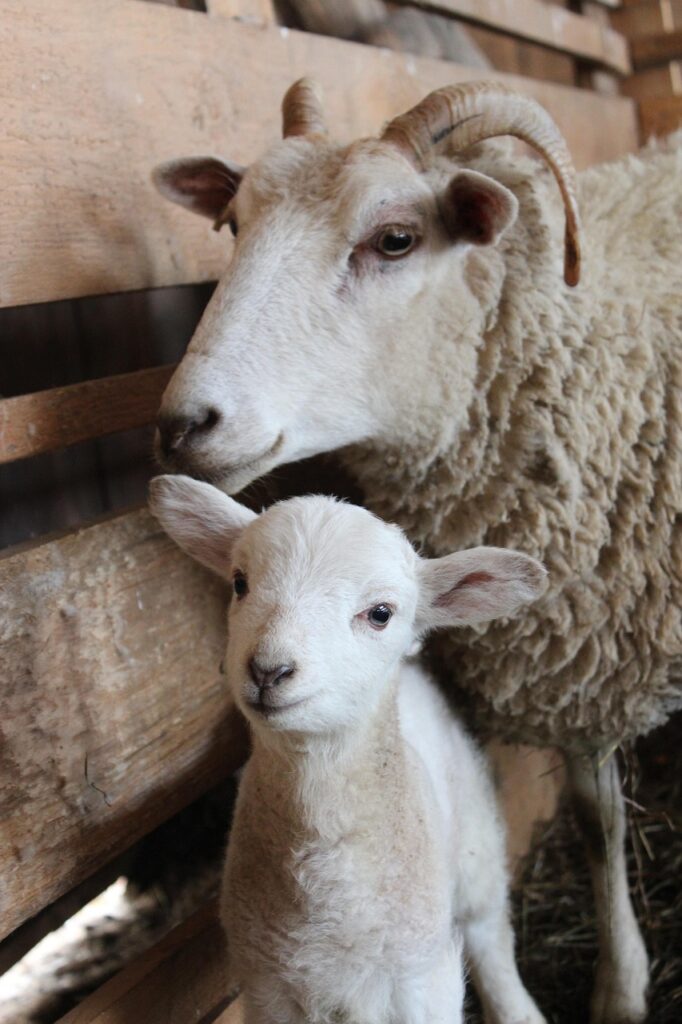
PS: Recently a couple of my friends took me out for Sunday brunch for my Jubilee. The restaurant was no ordinary restaurant. It was “Edwins Too,” an upper scale restaurant that employs formerly incarcerated individuals. This means all chefs, wait staff, and other workers, are former felons. It was all started by Brandon Chrostowski who, as a young man got into trouble with the law. As he faced sentencing, (he could have gotten 5 to 10 years), the judge (for some reason) gave him a second chance: parole. Chrostowski says, “I know it was because I had the right skin color.” He resovled to do something with his life to help give others a second chance too. I wrote about him and Edwins previously on my blog. If you want to read that, simply go to the top of the right side bar and type “Edwins Restaurant” in the search box. The restaurant is located in Cleveland Heights, OH. Visit their website for details.
Disclaimer: Please note: when I post a video, I am recommending only the video I post. Often, at the end of that video, other videos come up. Although some of those videos might be fine, others are NOT videos I would recommend. I have no control over what other videos are suggested at the end of the video I post. As with everything we view online, we must be careful. Thank you!
Here is a song entitled, “God, Give Me a Second Chance” by R. Kelly. It captures the theme of Edwins Too and today’s reflection: instead of saying I told you so, entrust the other with a second chance. (click on cc for closed captions)
I welcome your comments below!


